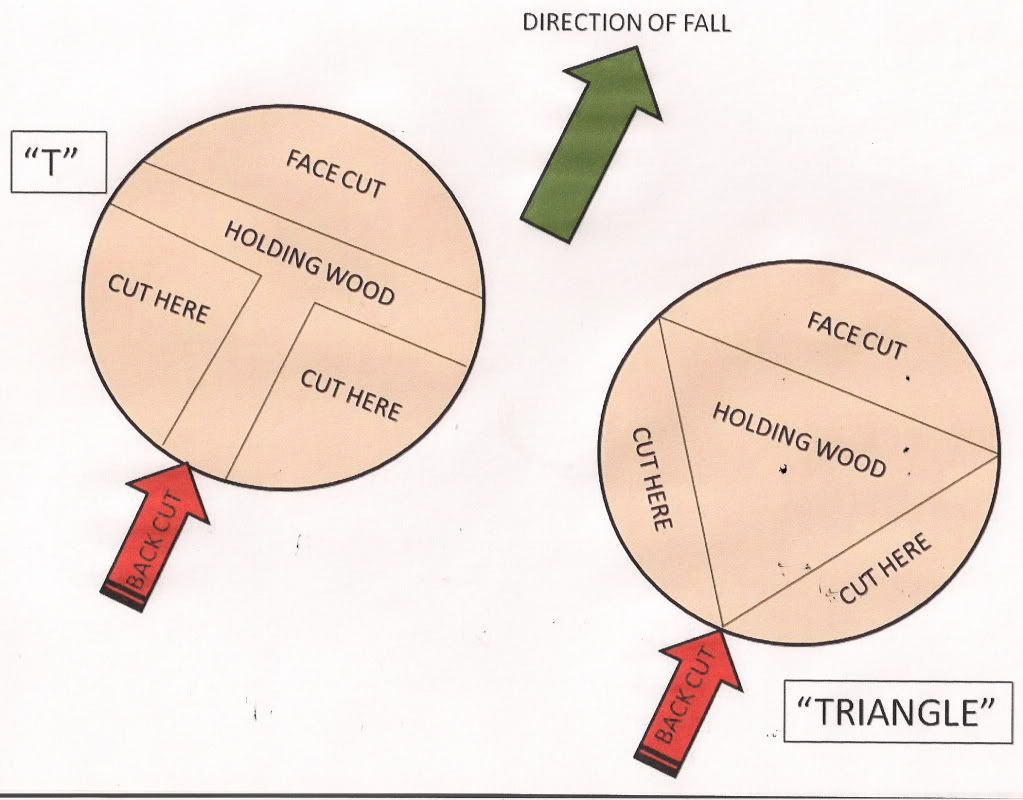Slamm
Addicted to ArboristSite
Slamm,
Your level stumps looks very finished, but your technique raises a couple of questions.
- Taking a knee when cutting a tree makes it kind of hard to run when it starts to fall, doesn't it?
- I don't see any wedges cut.
Am I missing something in your description?
It looks like your bowl-bore cut might be a good way to lessen a stump after cutting, but seems very contrary to conventional falling techniques. Any additional info would be appreciated.
Thanks.
Philbert
Most of the trees I cut don't go over until I want them to go over, and I know when to not take a knee at those times. When you have a big tree and it takes some time to hog around the thing, its not going anywhere for awhile, no point in using energy needlessly.
As to wedges cut, I assume you mean notching or facing those trees and yes they all where, I just use a very shallow face cut, because making a deep face cut on a tree that is already leaning where you want it to go is just double cutting the same wood and pointless in many cases. Deep face cuts give you direction control, and you don't need directional control if it already wants to go where you want it to fall, so again why cut two kerfs, when one will do just as good and faster with less effort.
Please understand that I'm just showing something that can be done to limit the height of a stump, I would not neccesarily "bowl cut" production trees in the woods, but cutting a good low stump isn't any harder than cutting a waist high stump and it sure looks a lot better, as you have indicated. The OP was asking how to more easily cut low stumps, I assumed he was talking about a low production setting, and I was just trying to show and explain a method of cutting a stump that doesn't rock the chain out and yet still makes for the lowest stump that can be had with a chainsaw, add a shovel and get even lower.
Then someone that lives on a higher hill than me started drooling over our flat ground and wanted to know if I could do that on a 50% slope, LOL.
Sam






 FS is 12" I believe. On steep ground I have my guy's cut at a "safe" and comfortable height, and recut the stump if necessary to keep the beaurocrats happy.
FS is 12" I believe. On steep ground I have my guy's cut at a "safe" and comfortable height, and recut the stump if necessary to keep the beaurocrats happy.







